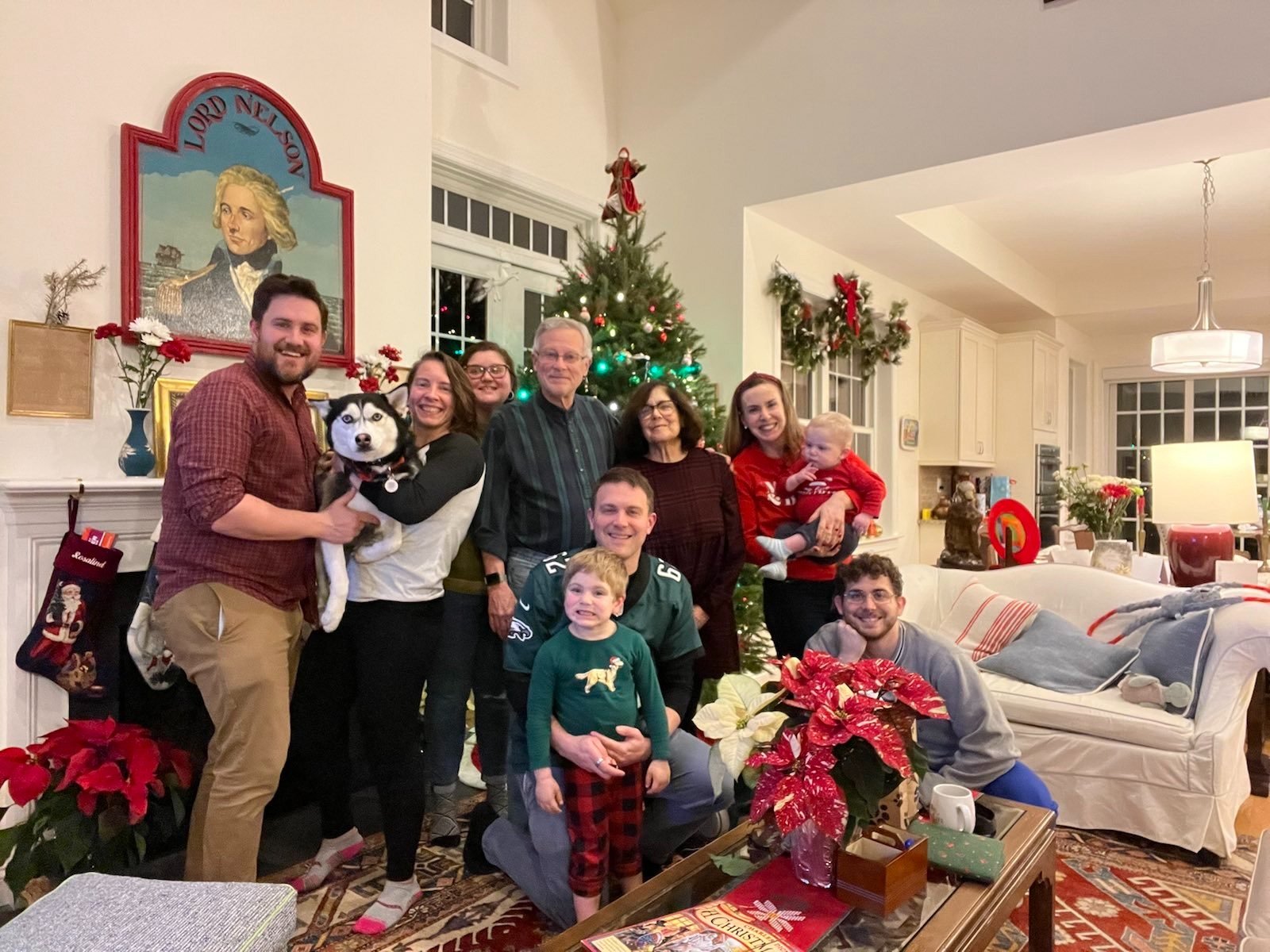My Experience as a Dad Doing the Doman Method Program
Doing the Doman Method with our First Child
Douglas Doman with his grandchildren
In 1983, my wife, Rosalind, and I had our first child. We couldn't wait to use everything we had learned while working under my father, Glenn Doman, to develop our baby cognitively, physically, and socially. My father created the Doman Method to improve brain development in children. Originally, the Doman Method was used for children with special needs, helping them reach their fullest potential, but he found that these incredible programs worked for all children. So, Rosalind and I were excited to start them with our son.
My wife and I had the privilege of working together and being able to organize our schedules around our son. The plan was I would do the Doman Program on Thursdays and the weekends, while Rosalind went to work, staying active in her profession. As an expert in early childhood physical development, I thought I should have been able to implement a better physical program than my wife. However, I quickly realized that her role as our child's mother trumped any expertise I had. Rather than competing, I followed her lead, and both my son and I were happier for it. That realization was over 40 years ago.
Navigating Parenthood with the Doman Method
Every Thursday, for more than 20 years, I stayed home to be the primary caregiver. It became my most challenging day of the week, but it was also one of the most rewarding experiences, engaging in the Doman Method program with our son. As he grew, the Doman programs we implemented had to be flexible to accommodate his rapid development. This flexibility posed a challenge for us, as it does for other parents. By the age of four, our son Marlowe had acquired a broad range of knowledge, including proficiency in foreign languages, physical development, and musical aptitude. The Doman programs also improved his cognitive development and helped him gain encyclopedic knowledge of the world around him.
When our second son, Spencer, arrived, Thursdays became even more complex, as I now conducted two distinct programs for my sons. This presented a new level of challenge, with our objective for Spencer being to achieve similar milestones to his brother by age four. Thanks to Marlowe's example, Spencer met this objective ahead of schedule, benefitting from the coaching of his older sibling. Morgan, our daughter, arrived when Spencer was four and Marlowe was eight, making our routines with their Doman programs more hectic. Nevertheless, our commitment to our children's cognitive, physical, and social development remained steadfast.
My wife and I were delighted to have two boys and a girl, all of whom were developing at an accelerated pace. Unexpectedly, when Rosalind was 44, we welcomed Noah into our family. With three older siblings to coach him, Noah reached developmental milestones with ease, benefitting from our experience as seasoned parents. The Doman Cards, also known as Doman flash cards, we used to teach Marlowe were still being used 12 years later to teach Noah - making his Doman program much easier.
From the outset, our goal for our children was for them to achieve independence by the age of 14. While we had not initially planned for them to be spaced four years apart, this arrangement proved to be great in supporting their individual development. The Doman Method truly showed me how effective it is for teaching babies and toddlers before they reach school age, giving them a head start in learning.
Spencer Doman coaching Noah with his physical program
Lifelong Benefits of the Doman Method
Reflecting on my children's upbringing, I am struck by the countless challenges we faced and overcame together. While I once feared the teenage years, I found them to be a period of mutual respect and strong bonding, cultivated through our shared experiences and open communication. We used Doman Books and Doman Cards to teach our children about the world around them, as well as emotional intelligence and how to treat others.
Today, my adult children remain passionate about learning, regularly sharing their discoveries with us. They have each developed their own physical wellness routines and prioritize nutrition as part of their lifestyle. Their continued closeness and support for one another bring me immense pride, reminding me of the enduring impact of our efforts as parents. I feel incredibly lucky to work with my children on our shared passion for child brain development, helping both neurotypical children and children with special needs around the world, and further validating the effectiveness of the Doman Method.
The most significant benefit of the Doman Method became apparent last Christmas when Marlowe played a reading game with our three-year-old grandson, Jackson. Jackson's enthusiasm for reading validated the effectiveness of the method, spanning four generations.
A Call to Fathers: Embrace Your Role
To fellow fathers, I urge you not to overlook your role in your children's development. Embrace a proactive role in nurturing your children, finding ways to connect with them and contribute to their growth. Whether it's through coaching physical activities or simply spending quality time together, your involvement is invaluable. The Doman Method teaches parents to carry out fun developmental programs at home, ensuring the best outcomes for their children.
As Glenn Doman always emphasized, our role as parents is to provide a foundation for our children to build upon, ultimately contributing to a better, more capable humanity. Let us continue to support and empower the next generation, ensuring they reach greater heights than we could have ever imagined.
If you would like to learn more about Glenn Doman’s work and how you can do a Doman Method program subscribe to our newsletter below. Our passion is helping guide you to become the best teacher for your child.
Doman Family Celebrating Christmas






